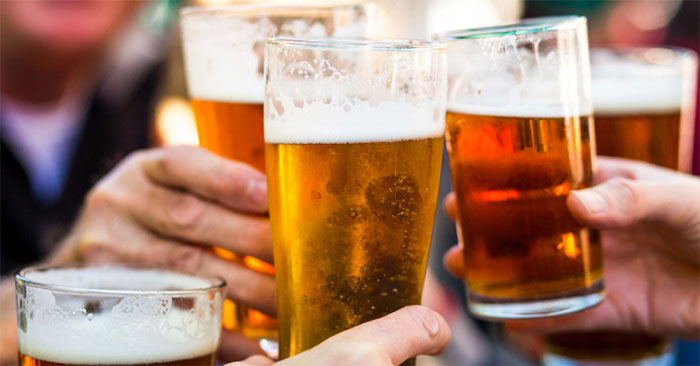Scientists have found a solution to help beer have more bubbles and less washing powder
Beer drinkers who like the taste of beer foam will soon be able to enjoy a beer whose foam extends from the top to the bottom of the beer mug. All thanks to the results of a recent study by British scientists.
Most liquids such as beer and shampoos contain some additives to create foam. And to understand how different additives can affect stable foaming, the scientists tried firing neutron beams on liquids and analyzing how they reflected.

Most liquids such as beer and shampoos contain some additives to create foam.
The team said that understanding how additives affect the structure of the foam allows developers to create the "ideal" foam for different products.
For example, a beer drinker can enjoy a foaming beer from start to finish. On the other hand, this technology can be applied to improve the formula of the detergent used in the washing machine to reduce the amount of foam when washing.
Dr Richard Campbell at the University of Manchester said: "Foam is used in many products and developers have long tried to improve them for better results. But the researchers seem to have a "They only think about the general surface characteristics, not the structure created when bubbles molecules assemble together on a bubble surface."

A beer drinker can enjoy a bubbly beer from start to finish.
Only by using neutrons can the team find an important difference. Thanks to the new measurement technique, they can know how the different additives arrange themselves on the liquid surface to create stability for the foam film.
Although understanding the state and behavior of bubbles in liquids contains only one additive, it's quite easy. But having too many additives will make it difficult to determine.
The team tested a mixture of surfactants - a compound that reduces surface tension and a polymer called polyelectrolyte , which is primarily used to produce shampoos.
For example, in beer, surfactants create a membrane around the bubbles, preventing the bubbles from bursting out by binding them to nearby air bubbles.
The researchers collected data from neutron reflection techniques and displayed them on computers. Through the data, researchers have gained more important information about the surface of the foam. This helps them easily find a way to extend the life of the foam.
Campbell emphasized: "For decades, scientists have been trying to control the life and stability of foam in liquids containing mixed additives. We believe the new method can be applied. with a range of systems, helping to develop products that interact highly with material science and the environment. "
Given the huge current retail costs of foam-containing products such as detergents or shampoos, mastering the technique of foam retention or reduction will bring enormous benefits to many chemical companies. cosmetics and drinks around the world.
- Video: Standard pouring method without adjustment
- Explain the phenomenon of beer bubbling when smashed into the top of the bottle
- Can beer be seduced by drinkers?
- 11 errors using washing machines in most families
- Find a solution to the riddle that no one has answered in 100 years
- A simple way to check if the beer you drink is dirty or not
- Beer, wine and even bottled orange juice faintly smell fishy. The reason is ...
- Is beer really good for your hair?
- Technology helps wash clothes without washing powder or any bleach
- The color of 'illusion' comes from the soap bubble
- 9 interesting things about beer
- Biological washing ball replaces washing powder
- The unexplored truth about beer
- Reason not to use soap to wash dishes
 'Fine laughs' - Scary and painful torture in ancient times
'Fine laughs' - Scary and painful torture in ancient times The sequence of numbers 142857 of the Egyptian pyramids is known as the strangest number in the world - Why?
The sequence of numbers 142857 of the Egyptian pyramids is known as the strangest number in the world - Why? History of the iron
History of the iron What is alum?
What is alum?